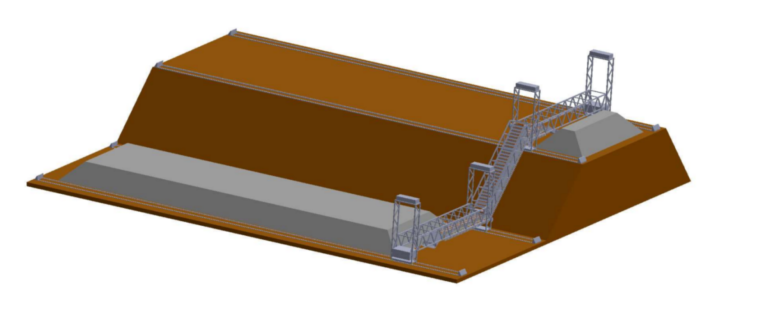Baud Resources, a clean technology startup, has developed a gravity energy storage mechanism that uses locally available materials such as sand and industrial waste as payload. The company is building a 100 MWh pilot plant that will reportedly offer storage costs of approximately INR 2.5 ($0.03)/kWh.
Baud Resources, an IIT Kanpur-incubated deep-tech startup, has developed a new approach to gravity-based energy storage that runs on gravitational potential energy without the need for water, dams or hills, unlike pumped hydro storage.
The mechanism can be implemented in any location (plains, desert or sub-zero climate). It uses locally available materials such as sand and industrial waste such as coal ash or construction waste as cargo and relies on artificial slopes of about 20 meters to 40 meters in height to lift sand from the lower station to the upper station and store energy as potential energy. The energy is released when sand is dropped when needed.
“Our proprietary gravity-based storage design [using sand] ensures efficient energy storage and dissipation,” said Dishant Mishra, CEO of Baud Resources pv magazine. “The mechanism is ideal for long-term storage and provides cost-effective electricity and high return efficiency.”
The startup’s upcoming commercial plant, to be announced this year, will offer 100 MWh of capacity and a levelized storage cost of approximately INR 2.5/kWh.
The system is based on the principle of the circular economy, using locally available sand (from the site itself or nearby) and/or industrial waste such as coal bottom ash from thermal power plants as payload. The height difference of 20 meters to 40 meters is achieved by excavation and reclamation on site. Continuous mass flow provides uniform load distribution, reducing concentrated load problems associated with block-based gravity storage designs.
The technology is a light and movable load transfer technique that works between the two stations. Permanent steel supporting structures are required to suspend the load. This gives Baud’s design the advantage of delivering huge plants at a much lower cost than other gravity candidates. Compared to hydropower plants, the gravity storage design also allows co-location with existing solar and wind power plants. It can be delivered in places with scarce water resources or in sub-zero climates where pumped hydro storage may not be a viable or efficient option.
“With a target of 500 GW of sustainable capacity by 2030, demand for storage is expected to increase. The energy storage market in India is expected to reach 350 GWh by 2030,” said Mishra. “Despite efforts in pumped hydro and battery energy storage, a shortage of 150 GWh is expected by 2030. We aim to fill this gap with our gravity energy storage system, expecting a capacity of 20 GWh to 40 GWh by 2030.”
Baud Resources successfully completed its field demonstration project at IIT Kanpur in November 2023. Following this achievement, it secured funding from Skoda Auto to support its ongoing and upcoming demo projects.
“Looking ahead, we are poised to announce our first commercial factory by the end of this calendar, with an expected completion in 2025,” said Mishra. “In addition, we are actively discussing with two leading customers to further strengthen our presence in the market.”
This content is copyrighted and may not be reused. If you would like to collaborate with us and reuse some of our content, please contact: editors@pv-magazine.com.


